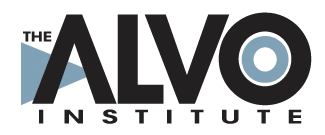By Chase Davenport, The Alvo Institute
In graduate school, I had the great fortune of taking one of Elizabeth Cohen’s courses, “Heterogeneous Grouping” (or some equally uninviting course name). Word among my classmates was that if I wanted to leave graduate school with something practical, enroll in one of her classes. So I did and glad of it.
The gap between the pedagogy taught in university education classes and teaching practices in school classrooms is often wide and bridged only by a circuitous route that few have the time to cross. This was especially true at Stanford with some notable exceptions. One such exception was the late Professor Cohen. As I soon discovered, much of her work focused on the classroom and, in particular, one persistent problem: student self-perceptions of status and its effect on learning outcomes.
Long before “No Child Left Behind” and even predating “A Nation At Risk,” Professor Cohen began investigating the impact of classroom instruction using heterogeneous grouping. This research led to the development of an approach she termed “Complex Instruction.” In her book, Working for Equity in Heterogeneous Classrooms, she describes complex instruction as “…a combination of strategies to treat problems of inequality within cooperative groups and a model of curriculum, instruction, and organizational support that is practical and workable in heterogeneous classrooms.”[1]
Professor Cohen and her colleagues found convincingly that when students interact in well-structured groups to address open-ended, high order thinking challenges, the effects of high and low status are mitigated. They also found that “[o]rganizational arrangements of the classroom predict learning outcomes. In addition, this “[i]nteraction is a strong and consistent predictor of achievement gains across subject areas and grade levels in three separate studies of complex instruction.”[2] Cohen is then careful to state that the kind of interaction or the purposeful arrangement and/or organization of group work is vital to this outcome.
Done right, blended learning is a form of complex instruction. It is a structure that demands differentiation, small group work, and importantly, delegation of some authority to students. It is this delegation that we find most teachers struggle with. How, then, can a teacher release control in a way that’s beneficial to learning? It is not an easy task.
As we often observe, when introducing group work teachers are prone to hovering and imposing their authority on students in groups or, conversely, totally releasing control by letting students have free reign with no structure. Neither strategy works because it is not the group activity itself, but rather the effective delegation of a teacher’s authority to the students, that enables quality group and cooperative learning. Empowering students to be more independent, self-reliant learners is not a process of relinquishing authority so much as transferring it to the students. It needs to be purposeful in order to be constructive, and students need to be held accountable.
At Alvo, we recommend that teachers do this transfer gradually. It is one reason we do not introduce computers to the classroom for at least the first three to four months. Through the gradual release scaffolding that we have developed, we support teachers as they begin to change the dynamics of their classroom, and we empower students to become more actively engaged in and responsible for their learning. In the process, students develop greater self-agency as they assume more authority for their learning. Skills and content acquisition is critical, but self-agency, persistence, and the ability to be an effective participant in groups are life-long learning goals all students must develop.
There’s a wonderful payoff for teachers as well:
“As they grow more comfortable with making students responsible for their own work, as they hover less over groups and rescue more and more infrequently, teachers find that they are free for the kind of teaching that attracted them to the profession in the first place: They ask questions to stimulate and extend their students’ thinking. They push the students’ understanding making connections among ideas, situations and events past and present…. In short, relieved from the burden of management, through feedback and questioning, teachers encourage the students to move beyond the procedural aspects of the task and to interact with one another at a higher conceptual level.”[3]
Professor Cohen’s book provides some wonderful techniques to enable effective group work and spends considerable time explaining the why and how of assigning group roles. These days, her book is fairly expensive, but its companion book, also by Professor Cohen, Designing Groupwork: Strategies for the Heterogeneous Classroom is far less expensive and offers practical application for the principles she advocates in her first book. It is also well worth reviewing.
